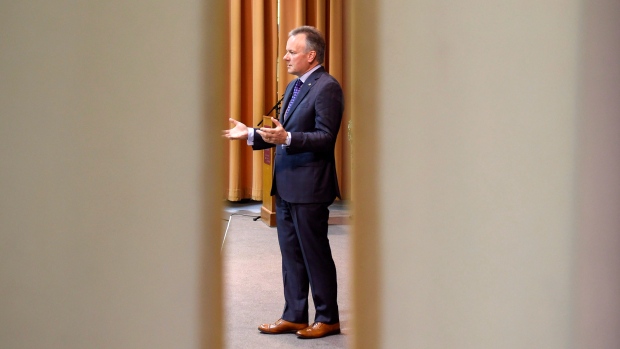Jul 8, 2016
Bank of Canada caught between risks at home, international shocks

Brexit fallout, ongoing ripple effects from the crash in crude oil prices, an unpredictable labour market, and increasingly bubbly home prices are weighing on the Bank of Canada as it navigates a treacherous economy.
The central bank is widely expected to hold interest rates steady when it meets next week. More than three dozen economists polled by Reuters this week unanimously forecast the decision on July 13 will be to maintain its key overnight lending rate at 0.5 per cent.
Volatility at home and abroad has forced Bank of Canada Governor Stephen Poloz to hold off raising rates despite growing concerns about household debt levels. The probability of a rate cut, however, has been increasing as weak economic data have shown the pace of Canada’s economic recovery remains fragile at best.
Economists are factoring in an eight per cent chance the Bank will cut rates this month, but that probability increases steadily over the remaining announcements scheduled for 2016. When the central bank meets for the last time this year on Dec. 7, economists are assigning a nearly one-in-three chance (30.2 per cent probability) of a rate cut.
Multiple factors are adding pressure for the Bank to cut rates while only one – runaway housing prices in Vancouver and Toronto – would justify increasing interest rates. The June 23 vote for the United Kingdom to exit the European Union in a so-called Brexit is widely expected to slow economic growth worldwide, which economists believe could hurt Canadian exports. Indeed, exports to the U.K. fell off a cliff in the run up to the vote: Statistics Canada reported this week that shipments plunged 45.4 per cent in May.
Export growth is key to Poloz’s expectations for a recovery, as is a stronger labour market -- and the latest data on that front have been far from strong. Canada lost 700 jobs in June versus 5,000 jobs that were expected to be created, according to Statistics Canada data released on Friday.
What may be more discouraging than the disappointing headline figure, TD Economist Brian DePratto said in a note published later Friday morning, “are the signals being sent by falling participation rates, which may point to discouraged individuals, particularly within the core 25-54 demographic.”
“None of these details suggest a healthy labour market,” DePratto said while stressing it was “too early to draw any firm conclusions regarding the trend in the Canadian labour market” and repeating his expectation for the Bank of Canada to maintain its 0.5 per cent interest rate next week.
Expectations for higher rates are still in place for late 2017 or early 2018. Higher rates would have a clear cooling effect on the country’s hottest housing markets by making mortgages more expensive to maintain, thereby cutting what has for years been record demand fueling dramatic increases in prices.
Despite the prospect of a long wait for higher rates, Bank of America Merrill Lynch is not anticipating an overly dovish tone from Poloz next week.
“Although global uncertainty and weak domestic data have raised expectations for a cautious BoC at this meeting, we argue against this outcome,” BofAML Economist Emanuella Enenajor wrote in a note to clients Friday. “History has shown Governor Poloz tends to push back against market expectations of a sudden dovish or hawkish turn.”
“In other words,” the report said, “the recovery is slow, but it is still on course.”


